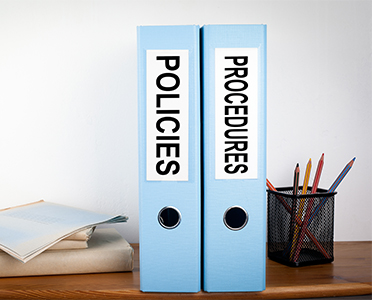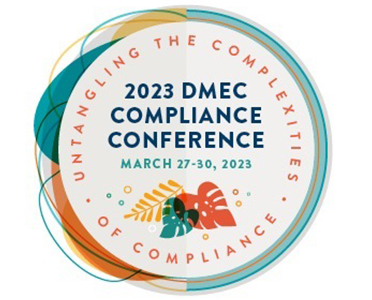In honor of the late Coolio, let’s reflect on this past year. I hope it was a Fantastic Voyage. We all had our ups and downs, but what I enjoyed the most about 2022 was binge-watching Selling Sunset on Netflix the ability to get back together in-person with colleagues, clients, and vendor partners. It’s been fun rebuilding those connections (responsibly-ish) and we hope to reconnect with you in 2023!
With so much activity on Colorado and Oregon’s Paid Family and Medical Leave programs, a lot of this newsletter is dedicated to developments in those states. But, of course, we can’t leave out California (mostly because they won’t let us) and we wrap up this edition by highlighting some great case law. Welcome to 2023, may it be a slide, slide, slippity-slide where you come along and ride on a fantastic voyage.
FEDERAL UPDATES

New EEOC Resource on Pregnancy Discrimination
One of my favorite things about having children is the fact that they refer to me as being born in the 1900s. When I ask that they call it something else, the best I get is, “. . . so . . . the late 1900s?” But another great thing about pregnancy (see the leap I took to get there) is that in September, the EEOC issued a new basic resource on pregnancy and related disability discrimination.
The resource begins with a summary of laws that protect pregnant employees (Title VII), including those with pregnancy-related disabilities (ADA). It also addresses discrimination against working parents and others with caregiving responsibilities, as well as retaliation and interference with ADA rights.
The guide further emphasizes that pregnant workers and new parents may have additional rights under the Family and Medical Leave Act (FMLA) and workers needing to express breast milk in the workplace may have rights under the Fair Labor Standards Act (FLSA).
But my favorite part of the new resource is an interactive map of state laws that outlines which states provide accommodations for pregnant workers, unpaid and paid job-protected leave, protections from discrimination, and additional rights regarding lactation. Way to go, EEOC!

Civilian Reservist Emergency Workforce Act
Congress has enacted the Civilian Reservist Emergency Workforce Act of 2021 (the “CREW Act”) to amend the Uniformed Services Employment and Reemployment Rights Act (USERRA) to extend USERRA’s protections to Federal Emergency Management Agency (FEMA) reservists. USERRA protects the job rights of individuals who voluntarily or involuntarily take a leave of absence from their employment to perform duties in the uniformed services. The amended law extends USERRA protections to FEMA reservists who deploy to major disaster and emergency sites, even if they provide their employer with no notice of their absence due to the deployment. The leave requirement also extends to training periods for FEMA service.
Congress has enacted the Civilian Reservist Emergency Workforce Act of 2021 (the “CREW Act”) to amend the Uniformed Services Employment and Reemployment Rights Act (USERRA) to extend USERRA’s protections to Federal Emergency Management Agency (FEMA) reservists. USERRA protects the job rights of individuals who voluntarily or involuntarily take a leave of absence from their employment to perform duties in the uniformed services. The amended law extends USERRA protections to FEMA reservists who deploy to major disaster and emergency sites, even if they provide their employer with no notice of their absence due to the deployment. The leave requirement also extends to training periods for FEMA service.
Congress has enacted the Civilian Reservist Emergency Workforce Act of 2021 (the “CREW Act”) to amend the Uniformed Services Employment and Reemployment Rights Act (USERRA) to extend USERRA’s protections to Federal Emergency Management Agency (FEMA) reservists. USERRA protects the job rights of individuals who voluntarily or involuntarily take a leave of absence from their employment to perform duties in the uniformed services. The amended law extends USERRA protections to FEMA reservists who deploy to major disaster and emergency sites, even if they provide their employer with no notice of their absence due to the deployment. The leave requirement also extends to training periods for FEMA service.
Congress has enacted the Civilian Reservist Emergency Workforce Act of 2021 (the “CREW Act”) to amend the Uniformed Services Employment and Reemployment Rights Act (USERRA) to extend USERRA’s protections to Federal Emergency Management Agency (FEMA) reservists. USERRA protects the job rights of individuals who voluntarily or involuntarily take a leave of absence from their employment to perform duties in the uniformed services. The amended law extends USERRA protections to FEMA reservists who deploy to major disaster and emergency sites, even if they provide their employer with no notice of their absence due to the deployment. The leave requirement also extends to training periods for FEMA service.

Happy 30th Birthday, FMLA!
Don’t worry, FMLA, you’re not like a regular 30-year-old . . . you’re a cool 30-year-old! Can you believe it? The Family Medical Leave Act was enacted on February 5, 1993. It’s amazing how much the leave landscape has grown in the 30 years since it was passed. Not only did the law grant much-needed job protection for employees who needed leave during challenging (and exciting) times in life, it also laid the groundwork for all of us to have jobs in this space (I kid).
Happy birthday, FMLA! Here’s to the next 30!
FMLA FAQ

When an employee submits a request for intermittent leave with a potentially high or inconvenient frequency, please remember FMLA is an entitlement program and you cannot argue the potential absences are a hardship or you will not accommodate. Ultimately, if an employee is eligible and substantiates the need for leave, you must permit that employee to take the time off, but may request recertification under certain circumstances.
As we wrote about last quarter, if an employee needs intermittent or reduced schedule leave that is foreseeable based on planned medical treatment for themselves or a covered family member due to a serious health condition, or if the employer agrees to permit intermittent or reduced schedule leave for the birth or placement of a child, the employer may require the employee to transfer temporarily, during the period the intermittent or reduced schedule leave required, to an available alternative position for which the employee is qualified and which better accommodates recurring periods of leave than does the employee’s regular position.
CASE LAW

An Accommodation “of Last Resort”
An Indiana-based senior living community will pay $115,000 and furnish other relief to settle a disability discrimination lawsuit filed by the Equal Employment Opportunity Commission (EEOC).
In December 2016, an employee fell while working and felt a snap in her left arm. The fall resulted in pain in her shoulder and arm, as well as some tingling and numbness. The pain was great enough that it limited the use of her left arm.
Immediately after this injury, the employee returned to work, but because of her pain, the employer imposed several workplace restrictions including a weight limit of five pounds and altered her workplace responsibilities. Instead of assisting residents with daily activities, like bathing, grooming, dressing, feeding, and toileting, the EE began working solely on paperwork and filing. The EE ultimately took leave for rotator cuff surgery in March until May 2017. When the EE returned, she had modified duty and handled paperwork, organized files, and assisted workers with medical records.
After months of physical therapy and light-duty work, she was determined to have reached maximum medical improvement, leaving her with permanent restrictions of lifting no more than 10 pounds and no over-the-shoulder lifting.
Understandably, the employer determined the employee could no longer perform the essential functions of her certified nursing assistant job due to the restrictions. However, the employee expressed interest in several jobs she could perform, such as an available receptionist position, without violating her lifting restrictions. However, the senior living community refused to accommodate her by transferring her to a vacant position for which she was qualified.
This conduct violates the Americans with Disabilities Act (ADA), which prohibits employers from failing to consider reasonable accommodations for employees with a disability.
What’s the lesson? While it was reasonable for the senior living community to determine the employee could not perform the essential functions of her role as an CNA, they violated the ADA by not considering an “accommodation of last resort,” which is transferring an employee to an available position for which they are qualified and can perform the essential functions with or without accommodation. It’s vital that employers evaluate alternative positions when it has been determined an employee cannot perform the essential functions of their current role. Employers are under no obligation to create a job for an employee, nor do they need to move an employee into a job for which they are not qualified; but where a vacancy exists and the employee is qualified, the transfer should be made.
UPCOMING EVENTS

The TAM team will be back at DMEC’s 2023 FMLA/ADA Compliance Conference, this time in Orlando, FL, from March 27–30. Registration details can be found here.
We have some new faces to introduce, so be sure to stop by our booth. If you are planning to attend, please let your Account Manager know!
STATE UPDATES
CALIFORNIA
COVID-19 Supplemental Paid Sick Leave Expiration
California’s COVID-19 Supplemental Paid Sick leave expired December 31, 2022. As of this writing, there is no known pending legislation that would require paid COVID-19 leave for 2023. Keep in mind, this isn’t the first time the SPSL expired only for California to resurrect it, so be on the lookout for any legislative updates.

COLORADO
Colorado Paid Family and Medical Leave Insurance (FAMLI)
Colorado has finally begun providing employers a little more insight on how the FAMLI program will be administered. With contributions live on January 1, 2023, we are all eager to learn a little more about the program.
Application for FAMLI Benefits
Employees will apply for benefits directly with the FAMLI Division unless an employer has been approved to use a private plan. Such applications may be submitted at least 30 days before an anticipated start date for benefits, although applications will be considered if submitted at least 30 days after leave has begun if earlier notice was impracticable under the circumstances.
Once an application for benefits is received, the state will notify the claimant’s employer of the application within five business days of the submission.
Employees must provide different forms of information depending on the nature of leave. An application to take leave for an employee’s own serious health condition will require a “Serious Health Condition Certification – Self Form,” while a separate “Serious Health Condition Certification – Family Member Form” will be required if the leave is in connection with a family member’s serious health condition. There will also be separate forms if the leave need is for qualifying exigency or safe.
Employees should also notify their employer of their need for leave in the same manner as they would typically communicate work unavailability and should follow the employer’s usual and customary notice requirements.
Adjudication of Claims
Once an application for FAMLI benefits is fully submitted by an employee, the Division will adjudicate the claim for benefits within two weeks. The Division will also notify the employee and employer of the benefit outcome.
If benefits are approved, the notice will include the leave start date, leave duration, any denied segments of requested leave, and a description of any approved reduced leave schedule or intermittent leave where applicable. Additionally, upon employer request, the Division will share certain information regarding the benefit amount and reason for leave to assist employers in coordinating other employer-provided benefits, such as PTO, sick leave, or other paid leave. In the absence of the benefit amount detail, the state has built a calculator to assist employers and employees in not only determining employer and employee cost, but also benefit amounts.
FAMLI Employer Registration Now Open!
My Famli+ Employer is the online employer services portal which Colorado businesses, third-party administrators (TPAs), and local government employers will use to manage their FAMLI accounts. My FAMLI+ Employer will operate similarly to My UI Employer, allowing employers to report wage data, remit premium payments, apply for exemption with a private plan and upload letters of declination votes. Most Colorado businesses will need to register in My FAMLI+ Employer before the first premium payments are due April 30, 2023.
Registration Checklist:
- The contact information for the primary administrator of the account and a second authentication method. The person completing the registration process for the My FAMLI+ Employer account will be the primary account administrator and will need to set up multifactor authentication to login.
- Business’s legal name.
- Business’s federal employer identification number (FEIN).
- Business’s primary location address and the mailing address (if different from the primary location).
- Total employee headcount. This will determine premium liability. More information on how to determine total employee headcount can be found on the Employers page under “Determining Your Employee Headcount.”
- The name and email address for any additional users that need access to the My FAMLI+ Employer account. Additional users can also be added after registration.
Private Plans
Colorado did not accept private plan applications in 2022. All employers must remit employee and employer (if you have 10 or more employees) contributions to the State beginning 1/1/23. Employers must submit their 1/1/24 private plan by 10/31/23. Colorado will refund employers for contributions paid to the State Plan for approved private plans effective 1/1/24.
There is a $500 fee per FEIN for 2024 effective dates and the application must be submitted at least 60 days prior to the requested effective date. Approval is good for eight years. However, every November, employers must attest their private plan meets requirements. Annually, beginning Q1 2025, Colorado will charge employers a maintenance fee to cover Colorado’s expenses associated with the prior year’s administration.
Self-insured private plans must have a Surety Bond in an amount equal to one year of total premiums under the State Plan.

OREGON
Paid Leave Oregon
Rules Summary
The Oregon Employment Department created a document that combines Paid Leave Oregon statutes and rules in one easy to read format. Aren’t they the most resourcefulest? A link to the compilation can be found here.
Change to Employee Count
Paid Leave Oregon changed the way employees are counted, based upon partner and community feedback, as it has been a consistent area of confusion. This change aligns Paid Leave more closely with the way employees are counted for the Unemployment Insurance program. The rules are available under definitions and methods, and there is a guide and chart to help employers determine their employee count.
Here is a summary of what’s changing:
- Previously, employer size was counted as the average number of employees over the previous four quarters using payroll reports.
- Now, employers count their size using the average number of employees on the 12th of each month from the previous 12 months. This means there are 12 numbers to calculate the average instead of four.
What’s not changing – 25 employees as the threshold between small and large employers.
- Employers with 25 and more employees are considered large, and those with fewer than 25 are considered small.
- Employers with 25 or more employees will still pay the employer contribution rate.
- Employers with fewer than 25 employees will not pay the employer contribution, but can choose to do so.
According to the State, this new way of counting employees will give employers a more accurate reflection of the true number of employees. This is especially important for small employers with high turnover.
This change was effective when contributions began on January 1, 2023.
Employer Notice Required 1/1/23
Paid Leave Oregon’s posting requirements were effective 1/1/23. Beginning 1/1/23, employers must post notice of the program in every establishment where employees are employed. Employers must post the notice in the languages it typically uses to communicate with employees. Additionally, employers must provide a copy of the poster to remote workers via hand delivery, regular mail, or email. The notice must also be provided to remote workers upon hire or upon assignment to remote work. The state’s model notice poster can be found here.
Communication to Employers on Employee Application for Benefits
If you are going with the State plan, notices from the State will contain approval status and leave start and end dates. That’s about all we can expect. Notices will not contain detail such as leave reason or payment amounts and will not provide definition on the parameters of intermittent leave. The state concedes employers need this detailed information to correctly apply OFLA/FMLA and to coordinate pay programs; however, they are taking the position that employers will need to rely on employees to provide the information needed to run the leave entitlements and pay programs that are under employer purview. Unfortunately for your employees, this could mean, in certain situations, a dual or even triplicate medical certification process if an employee is to receive protections under FMLA/OFLA, Paid Leave Oregon, and potentially STD as well. This news comes as a disappointment, but not a shock. For those of you operating in Washington, your experience has been similar under WAPFML. However, we are appreciative that we have this decision from OED with enough time for employers to plan and make informed decisions on how to best integrate pay programs.
So my question is, how many cocktails does it take to recover from reading that paragraph? Is it five? I feel like it’s five.
Public Health Emergency Declaration – Revised OFLA Eligibility
Governor Brown declared a public health emergency on November 14, 2022, in response to an increase in pediatric cases of respiratory syncytial virus (RSV). The declaration extends to March 6, 2023, unless extended or terminated earlier by the governor.
What does this mean for you? As we wrote in Q4 2021 and Q1 2022, OFLA eligibility is revised during periods of a PHE. As a result, employees may become eligible for OFLA with just 30 days of employment (rather than 180) if they have worked an average of 25 hours a week in the 30 days before taking a leave. Additionally, OFLA eligible employees who terminate or are removed from the schedule but return to service within 180 days remain eligible for OFLA leave on their return. Also, credit for days of employment prior to a break in service must be restored to the employee when the employee is reemployed/returned to service by the former employer within 180 days.
Oregon’s prior Public Health Emergency was effective January 1 through March 31, 2022. Once the declaration is lifted, employers revert to the standard OFLA eligibility rules.

WASHINGTON
Paid Family and Medical Leave Premium Increase
Premiums, collected from employees and employers through quarterly reporting, fund the Paid Leave program. By law, Washington recalculates the Paid Leave premium rate annually on September 30. The premium rate is adjusted based on contributions from premiums and benefits paid during the previous year. To keep pace with more people using the program, the premium rate for Washington Paid Family and Medical leave increased effective January 1, 2023. Specifically:
- The total premium rate will be 0.8%.
- Employers will pay 27.24% of the total premium and employees will pay 72.76%.
- Employers will continue to report each employee’s total gross wages, not including tips, and collect premiums up to the Social Security cap. Once an employee meets the Social Security cap, employers must stop collecting premiums but continue to report their wages.
Businesses classified as having fewer than 50 employees are not required to pay the employer portion of the premium. However, they must still collect the employee premium or pay the employees’ premiums on their behalf.
HAVE QUESTIONS FOR OUR TOTAL ABSENCE MANAGEMENT TEAM?
CHECK OUT OUR BLOG




